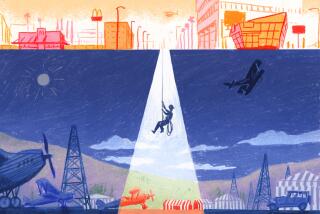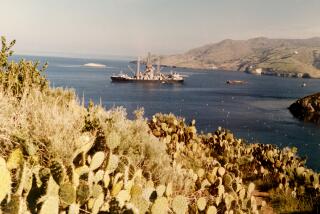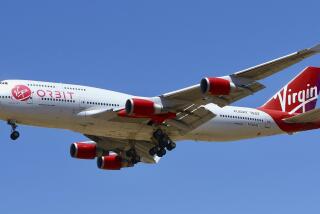Book review: ‘Hughes After Howard’
- Share via
For the generation that grew up during the Cold War, Hughes was synonymous with aerospace, an industry that flourished and dotted Southern California’s landscape. At its height in the mid-1980s, Hughes Aircraft Co., like the industry, was ubiquitous, from Newport Beach to Santa Barbara with sprawling facilities in Culver City, El Segundo and Canoga Park. More than 85,000 worked for the company developing the nation’s most advanced military electronics.
Despite its ever-presence in the region, not much has been written about the aerospace giant other than as a sideshow to its eccentric founder Howard Hughes. One of the more obvious reasons was that the bulk of the work done at Hughes was classified. Few dared to talk about it for fear of being arrested. To this day, some former Hughes engineers and scientist have yet to tell even their spouses of their work, much of which is still classified.
In collaboration with more than 90 retired Hughes employees, the company’s former president D. Kenneth Richardson attempts to fill that void in one of the more comprehensive accounts of the company, from the moment Howard Hughes relinquished control in 1953 to its breakup four decades later. Richardson was in a unique position to recount its history, having started as a hardware designer just as the company began its ascent to retiring 40 years later in 1991 as its No. 2 executive.
It was during that career span the company grew from an obscure aircraft maker — really a “plaything” for the billionaire — to an aerospace giant that would be dubbed a national treasure for its role in developing radar, missile and satellite systems that in part helped to end the Cold War. In addition to military contributions, its commercial legacy included DirecTV, digital watches and the OnStar automobile navigation and emergency services.
Richardson ably recounts the development of many of the technologies, and indeed, historians, engineers and scientists are sure to relish the detailed account of replacing the lead-sulfide detectors in Sidewinder and early Falcon missiles. (It was instrumental in making smarter radar.)
But for most readers, they are likely to be distractions from the more entertaining anecdotes interspersed throughout the book.
Shedding more light on the famously secretive Area 51 in Nevada, Richardson describes for the first time how Hughes conducted radar tests there. On a lighter note, he recounts how engineers, for all their focus on precise calculations, were notoriously superstitious. All Hughes missiles undergoing tests had to have a Chiquita banana sticker affixed to them after the first time it was done — at the whim of a technician — and the test was considered hugely successful.
He also writes how Howard Hughes was “slow as molasses” making decisions, which led one enterprising executive to leave every proposal with a note saying he considered it approved if Hughes did not respond in three days. It was partly this indecisive trait that led the Pentagon to push for Hughes to give up control of the company in 1953 to a private foundation.
Ironically it would be the “ultraconservative decision-making practice” of General Motors Co. that would spell the end for Hughes. The automaker bought Hughes for $5.2 billion from the private foundation in 1985 but then began selling off pieces of the company in the mid-1990s. Richardson notes that the automaker “usually took five years to insert a clever new design into production,” while Japanese companies took half the time.
“This awful molasses drag dismayed and discouraged the many break-the-rules engineers at Hughes, who had consistently introduced a new device into production in only twelve months.”
At the same time, “we became another publicly owned enterprise, with onerous demands for short-term flashy results and higher priority on profit,” Richardson writes. “Thus began the tragic dismembering of our unique collection of creative talent.”
Peter Pae, the technology editor for The Times, was previously the paper’s aerospace writer.
More to Read
The biggest entertainment stories
Get our big stories about Hollywood, film, television, music, arts, culture and more right in your inbox as soon as they publish.
You may occasionally receive promotional content from the Los Angeles Times.










